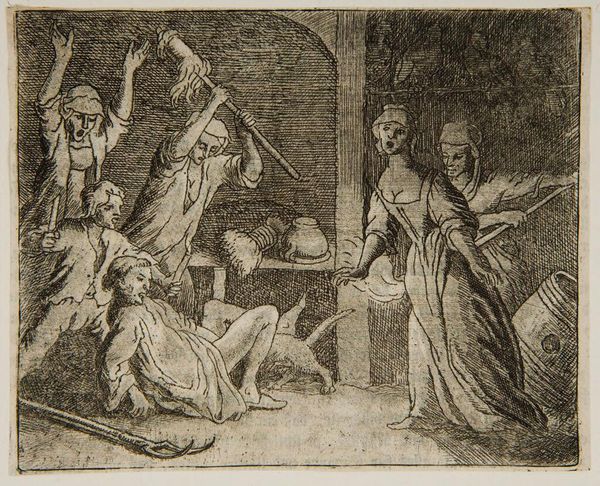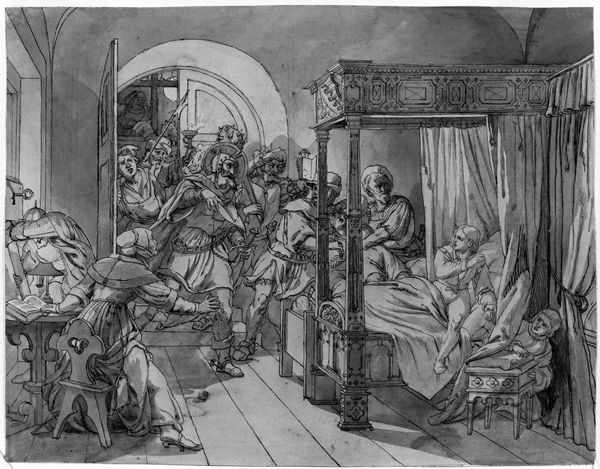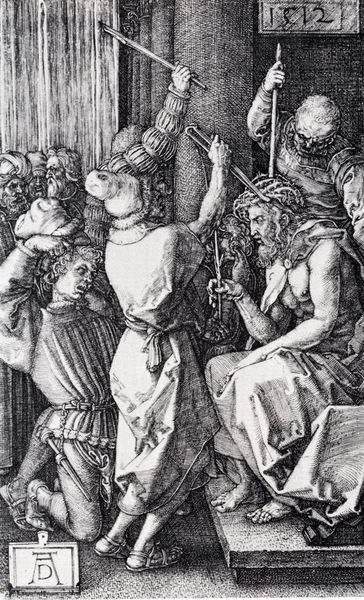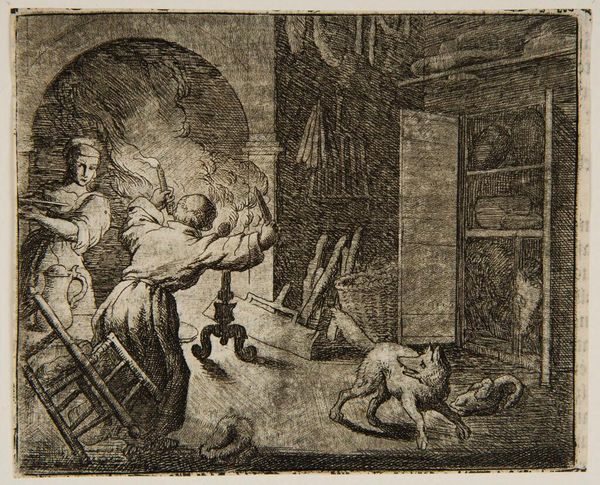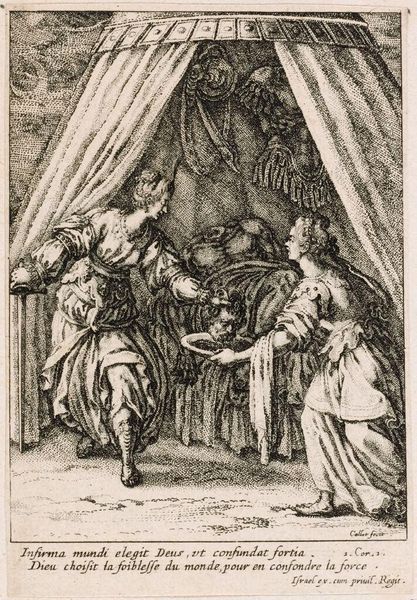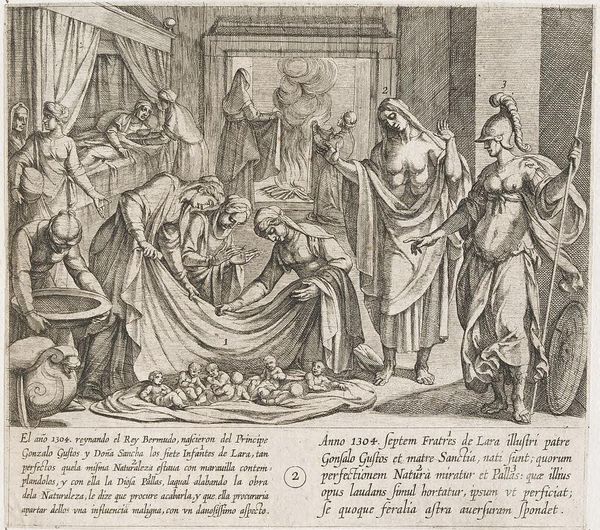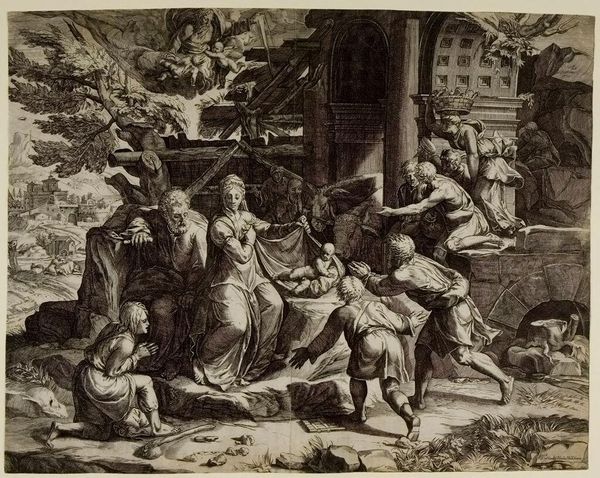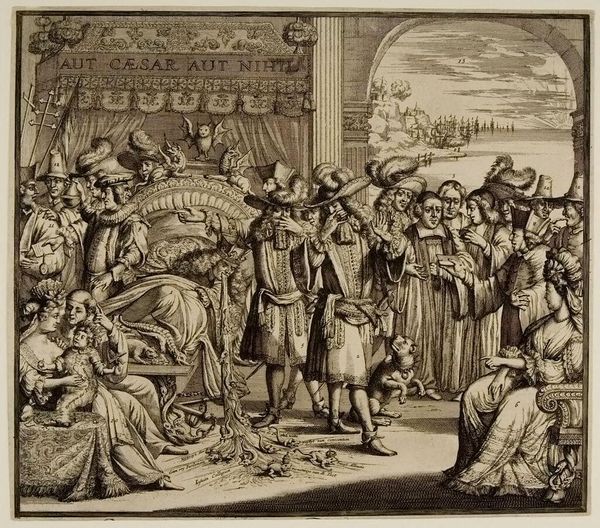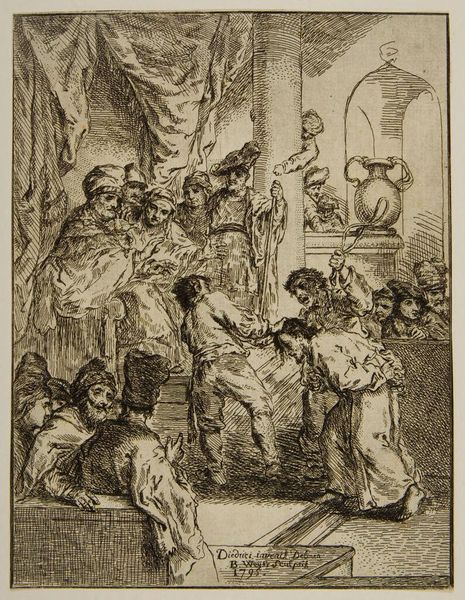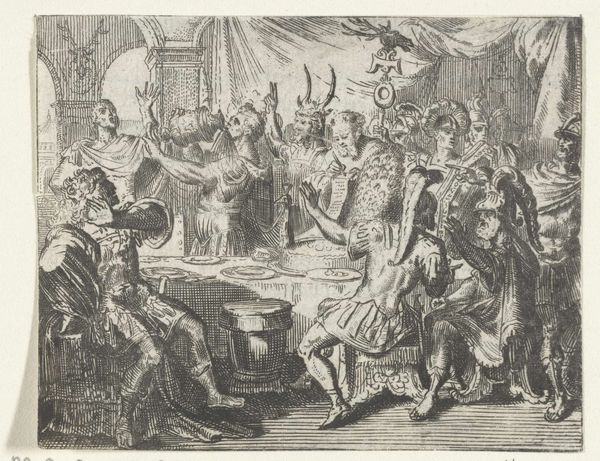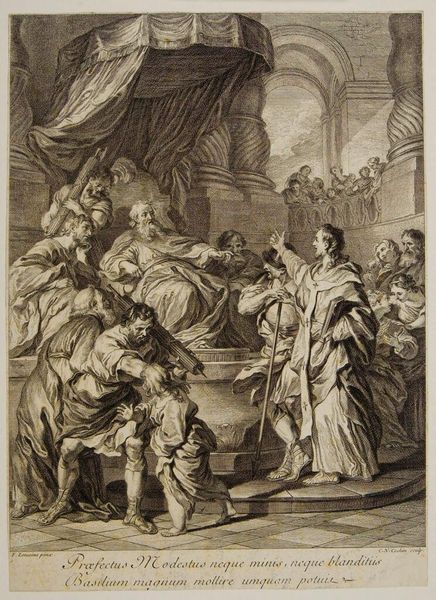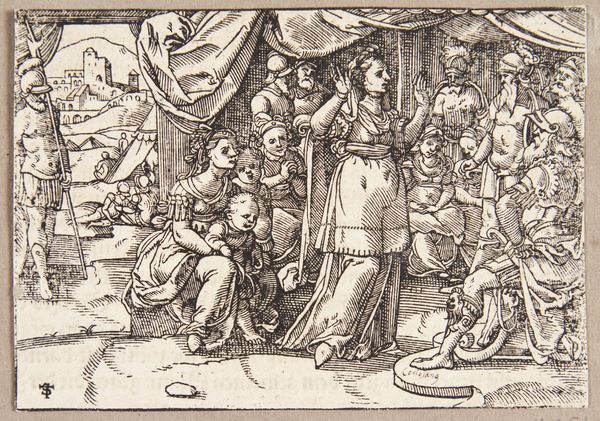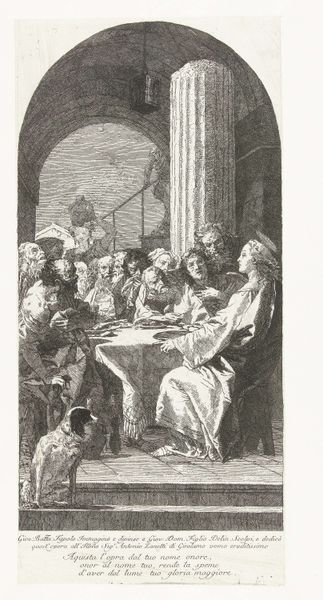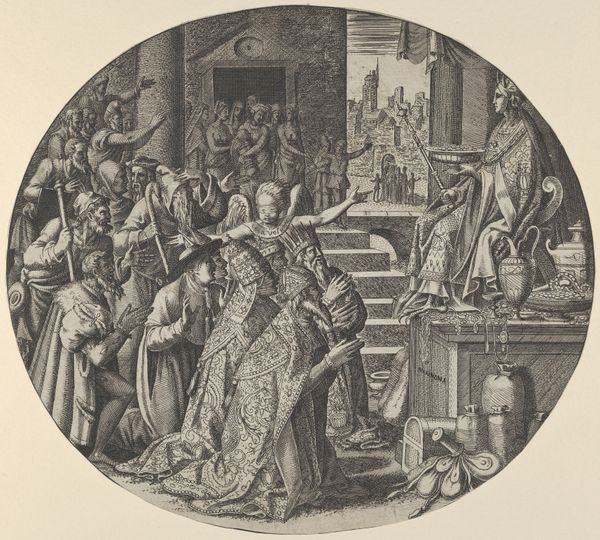
print, etching, engraving
#
narrative-art
#
baroque
# print
#
etching
#
genre-painting
#
history-painting
#
engraving
Copyright: Public domain
Curator: Let's examine "A Harlot's Progress, plate 6" by William Hogarth. Executed as a print using etching and engraving techniques, it depicts a complex scene within what appears to be a cramped interior. The distribution of figures draws immediate attention. Editor: My first impression? It's utter chaos. The tonal range creates this stark contrast, almost like stage lighting on a tragicomic performance. Curator: The composition directs the viewer's eye methodically, employing a receding plane. Observe how the linear perspective, converging towards the back, accentuates the sense of enclosure. There is no specific vanishing point, which heightens the tension, don't you agree? Editor: Definitely, this disruption serves to throw everything out of joint. The pallid skin tones and high, powdered wigs speak to me about the culture surrounding that time. It also has a great historical narrative—the end of our harlot! Curator: Note the visual motifs. We observe the rigid angles of the furniture and the contrast they establish in connection with the figures arranged within the overall mise-en-scène. And on a conceptual level, the visual rhythm of despair! Editor: It also encapsulates the realities and perils faced by women in Georgian society—and the stark inequalities of the time. Poverty and prostitution and gender roles all mixed into one dramatic print. Curator: The artist masterfully utilizes a linear approach with fine, almost calligraphic details to create definition. These delicate strokes delineate emotion in a way that sculpts emotional contours, which contributes to the artwork's dramatic tone. Editor: For me, the most affecting is the emotional honesty that William Hogarth displays in capturing raw grief; it resonates on a human level regardless of time and cultural differences. What do you think? Curator: In conclusion, a potent amalgamation of artistic craft, skillful engraving techniques, linear compositions, and well-organized forms contributes to the impact of William Hogarth's work here, giving form to the visual narrative within the frame. Editor: Yes. "A Harlot's Progress, plate 6" uses high-contrast monochrome visuals with a deep, thought-provoking statement that underscores its importance within both Georgian-era studies as well as historical investigations relating to social justice matters in modern discourse!
Comments
No comments
Be the first to comment and join the conversation on the ultimate creative platform.
